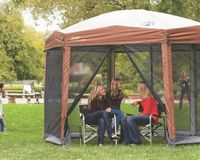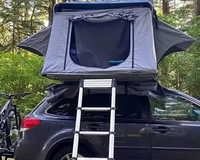
Whether you’re a seasoned hiker or just starting out, hiking can leave you feeling sore, especially after a long trek or your first outing of the season. While a hot shower and a trip to your favorite pub might sound tempting, there are better ways to recover, and some of them begin before you even hit the trail.
We spoke to Tim Bird, an experienced hiker from Tennessee, to gather some solid advice on how to recover after a strenuous day outdoors.
Here are a few key tips to help prepare for and recover from a challenging hike:
- Make sure your gear fits well and supports your body
- Stay hydrated and plan meals ahead of time
- Know your limits and adjust your hike accordingly
- Warm up and cool down properly
- Stretch, do yoga, or self-massage soon after hiking
1. Choose Gear That Fits and Supports You
Gear that doesn’t fit well can make a hike miserable, especially when you’re carrying it for miles. Your boots and pack need to fit correctly from the start, and your boots should be broken in before hitting the trail to avoid blisters and unnecessary discomfort. If you’re unsure about fit, head to a specialty store to get a fitting.
2. Trekking Poles: A Game-Changer
If you haven’t used trekking poles, give them a try. They help take some of the strain off your knees, especially when going downhill. Poles also give you more stability in tricky sections of the trail, reducing your risk of injury. It’s a small investment that pays off over many miles.
3. Pack Light to Prevent Fatigue
Heavy packs can take a toll on your body, especially over long distances. Aim to keep your pack weight under 20% of your body weight. It might take time to lighten your load, but focusing on the biggest items—like your tent, sleeping bag, or pad—can make a huge difference.
4. Sleep Is Key to Recovery
On multi-day hikes, getting a good night’s sleep can make all the difference. If your sleeping bag or pad isn’t providing enough warmth or comfort, you’ll wake up tired and sore. Balance comfort with weight, and don’t be afraid to add a pillow if it helps you sleep better.

5. Plan Your Meals and Snacks
Good nutrition on the trail is just as important as good gear. Plan your meals in advance to avoid being underfed or running low on energy. Stick to complex carbs and protein for sustained energy. Avoid relying too much on sugar, as it can lead to energy crashes later.
6. Stay Hydrated and Snack Regularly
Don’t wait until you’re thirsty to drink. Hydrate frequently throughout the day, and keep snacks within reach so you can refuel without having to stop too often. Make sure you’re well-hydrated before starting your hike, too—this can help prevent fatigue from setting in.
7. Know Your Limits
Overambitious hiking plans can lead to exhaustion or injury. Be realistic about your abilities, and don’t push too hard, especially if you’re feeling fatigued. Choose trails with multiple scenic spots rather than just one destination, so you can enjoy the journey and avoid the pressure to keep moving.
8. Warm Up and Cool Down
Just like any other form of exercise, hiking benefits from a proper warm-up and cool-down. Start slow and give your muscles a chance to adjust. When you’re finishing your hike, ease your pace to allow your body to wind down.
9. Stretch or Use Yoga After Hiking
After your hike, take the time to stretch. It helps prevent stiffness and promotes flexibility. Even a few minutes of yoga can help relax your body and prevent soreness. If you have a favorite stretching routine, take it out after the hike. You can also use a hard bottle or trekking poles for a makeshift massage to relieve tight muscles.
10. Don’t Just Collapse
After a long hike, it can be tempting to collapse into camp without doing anything else, but staying active even just a little can help your muscles transition from exertion to rest. Consider doing some light camp chores to keep the blood flowing and avoid stiffness.












